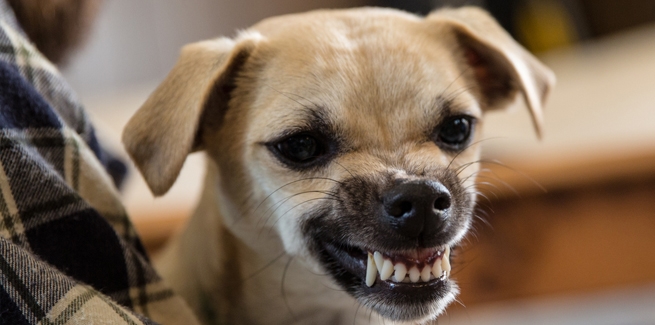New study identifies most damaging dog bites by breed

Nearly five million people in the US are bitten by dogs each year. The most common victims are children, most of whom are bitten by family pets. But which breed bites the most? That’s hard to say, because according to a new study, “unknown” tops the list.
But it's probably not the one pictured above.
Numbers two through six are easier. They are, in order: pit bull, mixed breed, German shepherd, terrier, and rottweiler.
The bottom five breeds for bite risk were: dalmatian, pointer, Great Dane, Pekingese, and spitz.
To assess bite severity, researchers at Ohio State University’s Wexner Medical Center reviewed 15 years of dog-related facial trauma cases from 240 patients who were treated at Nationwide Children’s Hospital in Columbus, Ohio, and the University of Virginia Health System. They focused on wound size, tissue tearing, bone fractures, and other injuries severe enough to call in a facial trauma and reconstructive surgeon.
Researchers also combed the literature from 1970 to the present, searching for papers that reported data on breeds to determine the relative risk of biting from a particular breed. 40 reported bites was the minimum requirement for including a breed in the new study; 43 studies in the literature met that criterion. The researchers combined those results with with hospital data to determine the relative risk of biting and the average tissue damage of those bites.
They also created a damage severity scale.
“The purpose of this study was to evaluate dog bites in children, and we specifically looked at how breed relates to bite frequency and bite severity,” said Garth F. Essig, MD, lead author of the study and an otolaryngologist at Ohio State’s Wexner Medical Center. "We wanted to provide families with data to help them determine the risk to their children and inform them on which types of dogs do well in households with kids."
Essig also explained why “unknown” tops the list of breeds: “We often didn’t know what type of dog was involved in these incidents, [so] we looked at additional factors that may help predict bite tendency when breed is unknown.”
Those additional factors included weight and head shape. The findings showed that dogs with short, wide heads who weighed between 66 and 100 pounds were the most likely to bite.
Pit bulls were responsible for the highest percentage of reported bites across all the studies (22.5%), followed by mixed breeds (21.2%), and German shepherds (17.8%).
Mixed-breed dogs and pit bulls were found to have the highest relative risk of biting, as well as the highest average damage per bite. Breeds such as Great Dane and Akita were found to have a lower relative risk of biting; however, the average damage from these bites was high.
The researchers point out that the circumstances that cause a dog to bite vary and may be influenced by breed behavior tendencies and the behavior of the victim, parents, and dog owner.
Behavior such as teasing the dog comes to mind as a top reason: other studies show that in most dog bite cases, the kid started it. Grabbing at the dog was the behavior most likely to provoke the dog to bite. Specifically, pulling his tail, tugging his hair, or yanking a paw.
Nobody likes to be teased.
Photo credit © iStock/Molly_Wolff_Photography



